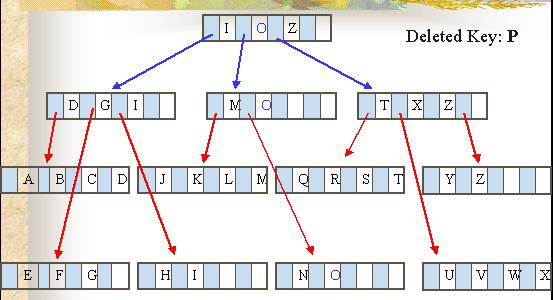| Consequently, deletion involves nothing more than removing the key from the node. |

|
| Consequently, deletion involves nothing more than removing the key from the node. |

|

|
Since P was the largest key in the second node in the second level, the root node must also have key P replaced by O. |